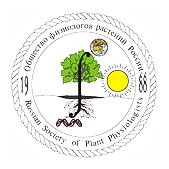Новости науки и практики // Октябрь 2016

Обзор научных новостей, опубликованных во всемирной паутине за последний месяц.
Researchers modify yeast to show how plants respond to a key hormone
New winter wheat variety offers high yields, disease resistance
Plants: Defying frost and the cold with hormones
Plants cannot simply relocate to better surroundings when their environmental conditions are no longer suitable. Instead, they have developed sophisticated molecular adaptation mechanisms. Scientists have been able to demonstrate that brassinosteroids, which until now have mainly been regarded as growth hormones, increase the resistance of plants against frost.
Photon management for augmented photosynthesis
Microalgae and cyanobacteria are some of nature’s finest examples of solar energy conversion systems, effortlessly transforming inorganic carbon into complex molecules through photosynthesis. The efficiency of energy-dense hydrocarbon production by photosynthetic organisms is determined in part by the light collected by the microorganisms. Therefore, optical engineering has the potential to increase the productivity of algae cultivation systems used for industrial-scale biofuel synthesis. Herein, we explore and report emerging and promising material science and engineering innovations for augmenting microalgal photosynthesis.
http://www.nature.com/articles
http://www.nature.com/articles
Growth and development of Arabidopsis thaliana under single-wavelength red and blue laser light
Here, we demonstrate the use of high-powered single-wavelength lasers for indoor horticulture. They are highly energy-efficient and can be remotely guided to the site of plant growth, thus reducing on-site heat accumulation. Furthermore, laser beams can be tailored to match the absorption profiles of different plant species. We have developed a prototype laser growth chamber and demonstrate that plants grown under laser illumination can complete a full growth cycle from seed to seed with phenotypes resembling those of plants grown under LEDs reported previously.
http://www.nature.com/articles
Leaf colour variation is observed in several plants. We obtained two types of branches with yellow and variegated leaves from Camellia sinensis. To reveal the mechanisms that underlie the leaf colour variations, combined morphological, histological, ionomic and proteomic analyses were performed using leaves from abnormal branches (variants) and normal branches.
http://www.nature.com/articles
By incorporating the effects of inbreeding depression (ID) on both juveniles and adults survivorship, we developed a new theoretical model for hermaphroditic perennial plants.
http://www.nature.com/articles
Bad seeds: How the parental lineage may determine viability in tomato hybrids
A group led by Thomas Städler at the Swiss Federal Institute of Technology, in collaboration with researchers at the University of Zurich, has performed the first study to investigate the genome-wide changes from interbreeding among closely related species of wild tomatoes. Now, they have identified the molecular culprits and genomic imprinting responsible for the failure of the majority of hybrid seeds to grow from crosses between two closely related South American wild tomato species.
https://www.eurekalert.org/pub
During drought, dry air can stress plants more than dry soil
Newly published research finds that low relative humidity in the atmosphere is a significant, growing and often under-appreciated cause of plant stress in hot, dry weather conditions. The finding suggests that models used to gauge the impact of drought on ecosystems should be refined to more accurately account for the role of low atmospheric humidity.
Study: Future drought will offset benefits of higher CO2 on soybean yields
An eight-year study of soybeans grown outdoors in a carbon dioxide-rich atmosphere like that expected by 2050 has yielded a new and worrisome finding: Higher atmospheric CO2 concentrations will boost plant growth under ideal growing conditions, but drought -- expected to worsen as the climate warms and rainfall patterns change -- will outweigh those benefits and cause yield losses much sooner than anticipated.
Unlocking the mystery on how plant leaves grow their teeth
Plant biologists at ITbM, Nagoya University have discovered the key element, an EPFL2 peptide that is responsible for creating the teeth-like shapes on plant leaves. The zigzag edges of leaves, so-called leaf teeth, are important for making the characteristic shapes of each leaf. This study illustrates the unexplored mechanism of leaf teeth formation and will shed light on finding out how leaves have developed to become the shapes that they are today.
Tapping the unused potential of photosynthesis
Scientists from the University of Southampton have reengineered the fundamental process of photosynthesis to power useful chemical reactions that could be used to produce biofuels, pharmaceuticals and fine chemicals.
Shrubs more expansive than trees
Shrubs are more widespread than trees in nature and on Earth. A new study explains their global success. It turns out that the multiple stems of shrubs are of key importance. This feature contributes to both better growth and better survival than in trees of similar size, according to the research team behind the study.
New study of CRISPR-Cas9 technology shows potential to improve crop efficiency
A team's finding that CRISPR-Cas9 is a reliable method for multi-gene editing of this particular plant species has been released in a new article. The technology, a genome-editing tool called CRISPR-Cas9, revolutionized the life sciences when it appeared on the market in 2012. It is now proving useful in the plant science community as a powerful tool for the improvement of agricultural crops.
Feeding a Mars mission: The challenges of growing plants in space
Plants will play a critical role in the survival of human beings on long-duration space missions, such as a mission to Mars. However, as a new paper shows, many challenges need to be addressed if astronauts are to successfully grow enough food on board spacecraft and on other planets.
Peeling back the layers: Scientists use new techniques to uncover hidden secrets of plant stem development
How plants grow new lateral roots: New method uses 3D live imaging
Researchers have used 3D live imaging to observe the formation process of lateral roots in plants, and clarified part of the mechanism that creates new meristematic tissue. If the root formation mechanism in plants is revealed further, this could potentially be used to control plant growth by artificially altering root system architecture.
New insights into 'plant memories'
A special stretch of ribonucleic acid (RNA) called COOLAIR is revealing its inner structure and function to scientists, displaying a striking resemblance to an RNA molecular machine, territory previously understood to be limited to the cells’ protein factory (the ‘ribosome’) and not a skill set given to mere strings of RNA.
Scientist helps to reach back through centuries of cultivation to track how corn adapted to different elevations, environments
A scientist is exploring the adaptations that have allowed corn to be cultivated in a wide range of elevations and environments across the Americas. Comparing corn varieties adapted to low elevations with those adapted to high elevations reveals some striking differences and could help plant breeders develop varieties more resistant to environmental stresses.
Breakthrough in salt-tolerance in plants research
A breakthrough has been made in investigating salt tolerance in plants which could lead to new salt tolerant varieties of crops, and also answer unresolved questions in plant biology.
Experimental evidence of pollination in marine flowers by invertebrate fauna
Marine plants reproduce by hydrophilly, that is, the movement of pollen by water. Here, the authors show that invertebrates can also carry pollen from male to female Thalassia testudinum plants.
http://www.nature.com/ncomms/2
Grain legume crops are a significant component of the human diet and animal feed and have an important role in the environment, but the global diversity of agricultural legume species is currently underexploited. Experimental assessments of grain legume performances are required, to identify potential species with high yields. Here, we introduce a dataset including results of field experiments published in 173 articles. The selected experiments were carried out over five continents on 39 grain legume species. The dataset includes measurements of grain yield, aerial biomass, crop nitrogen content, residual soil nitrogen content and water use.
http://www.nature.com/articles
Plant virus infections control stomatal development
Here we report findings showing that viral infection influences stomatal development in two susceptible host systems (Nicotiana tabacum with TMV (Tobacco mosaic virus), and Arabidopsis thaliana with TVCV (Turnip vein-clearing virus)), but not in resistant host systems (Nicotiana glutinosa and Chenopodium quinoa with TMV). Virus infected plants had significantly lower stomatal indices in systemic leaves of susceptible systems; N. tabacum 9.8% reduction and A. thaliana 12.3% reduction, but not in the resistant hosts.
http://www.nature.com/articles
Сосны и ели приспособились к холоду за счет сходных генов
Международная команда ученых провела масштабное исследование геномов двух видов сосны и ели, чтобы выявить генетические пути видовых адаптаций. Из образцов, собранных в 250 популяциях, представляющих полные видовые ареалы, получены расшифровки 23 тысяч генов, зарегистрированы характерные фенотипические признаки и природные параметры. Разносторонний статистический анализ этих данных показал, что в обоих видах шла направленная адаптация к холодным условиям, и выявил, что среди генов, вовлеченных в процесс адаптации, около полусотни оказались ортологичными, то есть родственными.
http://elementy.ru/novosti_nau
Genomic architecture of phenotypic divergence between two hybridizing plant species along an elevational gradient
Hybrid zones that occur across environmental gradients provide excellent opportunities for studying the maintenance of divergent adaptations in the presence of gene flow.
https://aobblog.com/2016/09/ge
In the Arctic, rapid warming due to climate change has led to earlier springs and increased plant production at a landscape scale. However, individual species in the tundra may respond differently to growth cues like timing of snowmelt and temperature. While many tundra species expand their leaves earlier due to early snowmelt and warming, this does not always lead to increased production. In a recent study published in AoB PLANTS,Livensperger et al. found that early growing species such as cottongrass (Eriophorum vaginatum) increased production under early snowmelt and warmed conditions, while later growing species did not. Early onset of the growing season may favor these early growing species.
https://aobblog.com/2016/09/ea
What sets apart individual trees that died versus trees that survived an extreme drought?
Garcia-Forner et al. (2016) investigated individual drought responses by exposing 5 year old Scots pine (Pinus sylvestris) saplings to extreme drought for 2.5 months in a greenhouse. They monitored morphological and ecophysiological variables before, during, and after the drought to compare characteristics of dead and surviving trees and determine why some individuals die and others survive.
https://aobblog.com/2016/09/se
Новости
Новости науки и практики // Апрель 2024
Обзор научных новостей, опубликованных во всемирной паутине за последний месяцФосфорилирование плазматической мембраны H+-АТФазы Thr881 (треонин) участвует в светоиндуцированном открывании устьиц
Ученые из Университета Нагои (Nagoya University) и Института трансформирующих биомолекул (WPI-ITbM) обнаружили новый ...Научная конференция «Photosynthesis and Hydrogen Energy Research for Sustainability – 2024»
Приглашаем Вас принять участие в XII международной научной конференции


Объявления
Записей не найдено.



